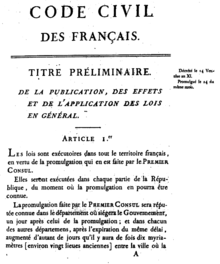 Recently, I was driving along the Hutchinson River Parkway to pick up a friend who was in town and meet up with another friend for dinner in the area. It was a lovely warm evening and during the the drive we talked about the historic significance of the region. Dinner was fun and after dropping my friend at his hotel, I followed my usual route back to NYC that closely hugs the Hutchison River as it winds through the Bronx. As I was preparing my daily open thread, On This Day In History, I came across this Wikipedia entry for Anne Hutchinson for whom the river and parkway are named:
Recently, I was driving along the Hutchinson River Parkway to pick up a friend who was in town and meet up with another friend for dinner in the area. It was a lovely warm evening and during the the drive we talked about the historic significance of the region. Dinner was fun and after dropping my friend at his hotel, I followed my usual route back to NYC that closely hugs the Hutchison River as it winds through the Bronx. As I was preparing my daily open thread, On This Day In History, I came across this Wikipedia entry for Anne Hutchinson for whom the river and parkway are named:
1638 – Anne Hutchinson is expelled from Massachusetts Bay Colony for religious dissent.
Anne Hutchinson (1591-1643) was one of the most prominent women in colonial America, noted for her strong religious convictions, and for her stand against the staunch religious orthodoxy of 17th century Massachusetts. She was a Puritan whose religious ideas were at odds with the established Puritan clergy in the Boston area, and her popularity and charisma created a schism in the Boston church which threatened to destroy the Puritans’ religious experiment in New England. Creating the most challenging situation for the ruling magistrates and ministers during her first three years in Boston, she was eventually tried and convicted, then banished from the Massachusetts Bay Colony with many of her followers. [..]
In 1634, after the birth of her 14th child, Hutchinson followed (John) Cotton to New England with her husband and 11 living children, and soon became well established in the growing settlement of Boston, in the English colonies. She was a midwife, and very helpful to those needing her assistance, as well as being very forthcoming with her personal religious opinions and understandings. Soon she was hosting women at her house once a week, providing commentary on recent sermons, and sharing her religious views, including criticism of many local ministers. These meetings became so popular, that she soon began offering meetings to men as well, to include the young governor of the colony, Harry Vane, and over 60 people a week were visiting her house to learn from her interpretations and views of religious matters. As a follower of Cotton, she espoused a “covenant of grace,” while accusing all of the local ministers (except for Cotton and her husband’s brother-in-law, John Wheelwright) of preaching a “covenant of works.” Several ministers complained about Hutchinson to John Winthrop, who served several terms as governor of the colony, and eventually the situation erupted into what is known as the Antinomian Controversy, resulting in Hutchinson’s 1637 trial, conviction, and banishment from the colony.
She was quite the activist for her day and stood trial for heresy, literally standing throughout the proceedings while, in what was believed, to be an advanced stage of pregnancy. She faced two trials, civil and church, and was expelled from Massachusetts by Gov. John Winthrop after being convicted by the church on March 22, 1638.
After her conviction, Anne. along with her husband, children and some of her followers, with the encouragement of Roger Williams, established the colony of Portsmouth “in what would become the Colony of Rhode Island and Providence Plantations:”
During Hutchinson’s imprisonment, several of her supporters prepared to leave the colony and settle elsewhere. A group of her followers, including her husband Will, met on 7 March 1638, at the home of the wealthy Boston merchant William Coddington. Ultimately 23 men signed what is known as the Portsmouth Compact, forming themselves into a “Bodie Politick” and electing Coddington as their governor, but giving him the Biblical title of “judge.” Of the signers, 19 of them initially planned to move to New Jersey or Long Island, but Roger Williams convinced them to settle in the area of his Providence Plantations settlement. Coddington purchased Aquidneck Island, in the Narragansett Bay, from the Narragansetts and the settlement of Pocasset (soon renamed Portsmouth) was founded. Anne Hutchinson followed in April, after the conclusion of her church trial.
Hutchinson, her children, and others accompanying her traveled for more than six days by foot in the April snow to get from Boston to Roger Williams’ settlement at Providence. They then took boats to get to Aquidneck Island, where many men had gone ahead of them to begin constructing houses. In the second week of April, she reunited with her husband, from whom she had been separated for nearly six months. [..]
She lived there for a few years, but after her husband’s death, threats of Massachusetts taking over Rhode Island compelled her to move totally outside the reach of Boston, into the lands of the Dutch. Sometime in 1642 she settled with her younger children in New Netherland near an ancient landmark called Split Rock in what would later become Bronx, New York City. Here she had a home built, but tensions with the native Siwanoy were high, and following inhumane treatment by the Dutch, the natives went on a series of rampages known as Kieft’s War, and in August 1643, all but one of the 16 members of Hutchinson’s household were massacred during an attack. The lone survivor, nine-year old Susanna Hutchinson, was taken captive, and held for several years before being returned to family members in Boston.
Hutchinson is a key figure in the study of the development of religious freedom in England’s American colonies and the history of women in ministry. She challenged the authority of the ministers, exposing the subordination of women in the culture of colonial Massachusetts. Although her religious ideas remain controversial, her implicit rejection of state authority to prescribe specific religious rites and interpretations, was later enshrined in the American Constitution. Massachusetts honors her with a State House monument calling her a “courageous exponent of civil liberty and religious toleration.”
The inscription on the base of the statue in front of the State House in Boston, Massachusetts that honors Anne and her daughter, Suzanna reads:

IN MEMORY OF
ANNE MARBURY HUTCHINSON
BAPTIZED AT ALFORD
LINCOLNSHIRE ENGLAND
20 JULY 1595 [sic]
KILLED BY THE INDIANS
AT EAST CHESTER NEW YORK 1643
COURAGEOUS EXPONENT
OF CIVIL LIBERTY
AND RELIGIOUS TOLERATION
Click on image to enlarge
Beside being one of the few women who have a river named for them, Anne Hutchinson is thought to be the basis for the character of Hester Prynne in Nathaniel Hawthorne‘s The Scarlet Letter. The parallel being “that Hutchinson is the heretic who metaphorically seduces the Puritan community, while in Hawthorne’s novel Hester Pyrnne literally seduces the minister of her community.”
Considering the recent debate over women’s access to health care and our First Amendment rights, remembering the early history of religion and the role that women played is a reminder that this conversation has been going on for a lont time.

 On this day in 1784, the
On this day in 1784, the  Spring officially sprang at 1:14 AM Eastern Daylight Time on Tuesday. Partially because this is a “Leap Year”, in some times zones the
Spring officially sprang at 1:14 AM Eastern Daylight Time on Tuesday. Partially because this is a “Leap Year”, in some times zones the 
 Recently, I was driving along the
Recently, I was driving along the 
 On this day in 1804,
On this day in 1804, 
Recent Comments